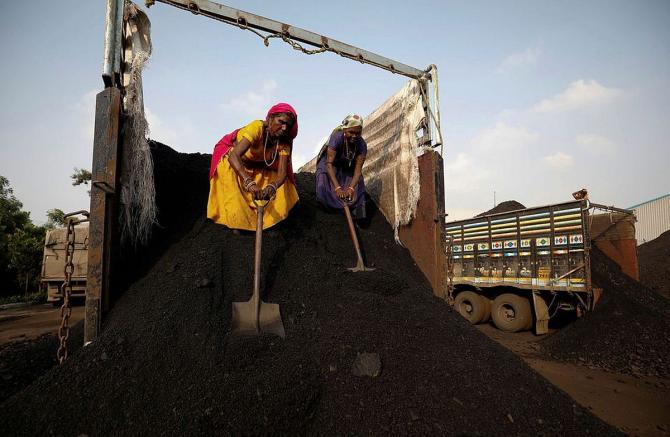Conflicting views on Coal India (CIL) might leave investors confused.

The bullish perspective that India has strong power demand (and also high steel production) means high demand for coal.
As CIL is the monopoly producer of coal -- supplying over 80 per cent of the domestic requirement – the public sector undertaking should be a beneficiary of the rising power demand.
As a result, steel producers who don’t have access to CIL’s coal or their own captive mines, are forced to import coal.
The bear case is as follows.
A large part of CIL’s production must be sold at fixed long-term rates under its FSA (Fuel Supply agreements) with power plants.
The FSA rates are rarely revised, and are unlikely to go up in an election year since an FSA hike translates directly into higher power tariffs.
The last such revision took place in 2018.
CIL manages to sell between 8-15 per cent of production at e-auctions, at higher realisations.
In addition, CIL has high capex spends but according to the bears, it has not managed to generate commensurately higher volumes of production.
In addition, CIL is due for a wage hike.
There’s robust demand for coal -- both bulls and bears agree on that.
CIL hopes to ramp up production to 1 billion tonnes per year (from an estimated 700 million tonnes per annum or MTPA in the 2022-23 financial year (FY23), and envisages improved e-auction volumes and premiums.
While e-auction prices are linked to imported prices (hence global prices), and global prices have eased, higher e-auction volumes would compensate.
After protracted negotiations, wage hikes are expected to be lower than provisioned and the PSU may use wages as a lever to raise FSA prices.
The company has reduced hiring among older age groups, and as retirements occur, the wage bill should reduce.
However, it is possible that further negotiations will result in higher wage bills and also higher pensions.
The premium of e-auction prices over the FSA is 200 per cent, or higher.
This does indicate FSA prices are too low.
Analysts believe that quarter 4 e-auctions will cover around 10 per cent of production and that the premiums and volumes will be good.
Is this sustainable – especially the e-auction volumes – in the long run?
As importantly, can CIL (a PSU with its largest customer NTPC, also a PSU with locked-in FSA) hike FSA prices even if it has to commit to higher FSA volumes?
CIL has FSA commitments for up to 600 MTPA in the long term and it will despatch around 696 MT (estimated) in FY23.
The capex must translate into pushing production volumes towards the 1 billion target.
Analysts project CIL will despatch 765 MTPA by FY25.
Returning to the bear case, productivity in terms of coal produced per employee is very low.
The capex aims to improve productivity and reducing the workforce could help.
The company had Rs 44,500 crore in cash on its balance sheet (Sep 22) which is 30 per cent of its market capitalisation.
Hence, you can argue CIL is under-valued.
But the PSU also has persistently high receivables and large long-term provisions.
Is it under-valued or a value trap?
The bears calculate fair value at around Rs 198 while the bulls estimate it to be between Rs 259 and Rs 275.
At the current price of Rs 208, the possible upside seems higher than the possible downside.












 © 2025
© 2025